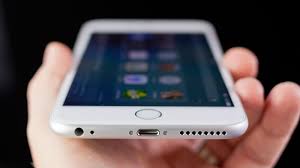BY BASIRAT ISHOLA
The cliché that we are currently living in the jet age where everybody is in a hurry to get as much accomplished within the shortest possible time has never been more accurate. There is the need for the professional to always go around with his laptop, tablet or smartphone, alongside his memory card, flash drive and external hard drive to enable him quick access to important work data so that he can work on the go. The average student is not left out of this craze. He wants all his study materials, music, movies and games at hand and ready for use ASAP.
This scenario has led to constant competition amongst those in the industry to launch the latest, slimmest and largest memory smartphones, tablets and laptops, so as to expand and consolidate their market share.
Before going further with this discussion, it is pertinent to explain the term non-volatile memory (NVM). It is basically used to describe any form of memory or storage that remains saved regardless if the computer is powered on or off. The most popular NVM types are the computer hard drive, flash drive and ROM.
Advertisement
The rapid increase in the capacity of non-volatile memory will definitely have a significant impact on computer architecture, data processing and influence our lives as it influences our use of laptops, tablets, smartphones and other associated devices. For this discussion, I am going to focus on the smartphone.
Over the past decade, there has been a progressive shift from the use of desktop and laptop computers to the use of tablets and smartphones. The preference for the latter stems from its portability and ability to perform virtually all the operations the laptop can perform, coupled with the fact that there is an endless stream of new mobile Apps that simplify everyday activities such as banking, shopping, travelling etc. This gives the smartphone an edge over laptops and desktop computers.
This trend has given rise to a series of extensive research in the industry to extend the data storage capacity of the smartphone, as well as improve the speed of data processing. The mobile platform presently deployed creates a number of issues for the smartphone because they are mostly based on the conventional operating system developed for the desktop.
Advertisement
Conventionally, the two primary challenges associated with the performance of the smartphone are slow processor performance and the limited bandwidth of the wireless network. However, based on recent research findings, it was discovered that NAND flash memory results in severe performance degradation in smartphones. Specifically, synchronous writing by journaling dominates storage traffic in flash memory, leading to a severe slowdown of smartphone systems.
In other to overcome this issue, an experiment was carried out, which involved turning the journal functional ability of the smartphone on and off, while measuring the right traffic and storage performance. The initial findings show a drastic improvement in storage performance by between 27-370%. Consequent to this, a novel journaling architecture that eliminates the majority of storage accesses by making use of NVM without any attendant loss of reliability was developed. Nonvolatile memory media such as PCM (phase-change memory) and STT-MRAM (spin torque transfer magnetic RAM) are recommended as viable components that may be built into present smartphone systems to improve their performance.
Processing-in-memory (PIM) is another area of interest being researched to effectively take advantage of the unique features of NVM, aimed at implementing computation in main memory, invariably eliminating the overhead of data movement between CPU and memory. Initial experimental findings show a 1.12x overall speedup and 1.11x overall energy saving over the conventional processor.
It is obvious from the above examples that the industry is carrying out a lot of research in non-volatile memory storage, which is impacting the conventional architecture of both the smartphone and laptop/desktop computers in other to improve data processing and storage efficiencies. The ultimate result will be smaller and more efficient smartphones and computers that will make it possible for us to eventually carry all the data we want, be it for leisure or work in our pockets and/or purses and access them on the go. This will result in improved all-around efficiency alongside environmental gains in the area of reduced electronic waste, due to the attendant shrinking sizes of our devices.
Advertisement
Ishola, a lead data scientist and business intelligence specialist, writes from Lagos
Views expressed by contributors are strictly personal and not of TheCable.
Add a comment






